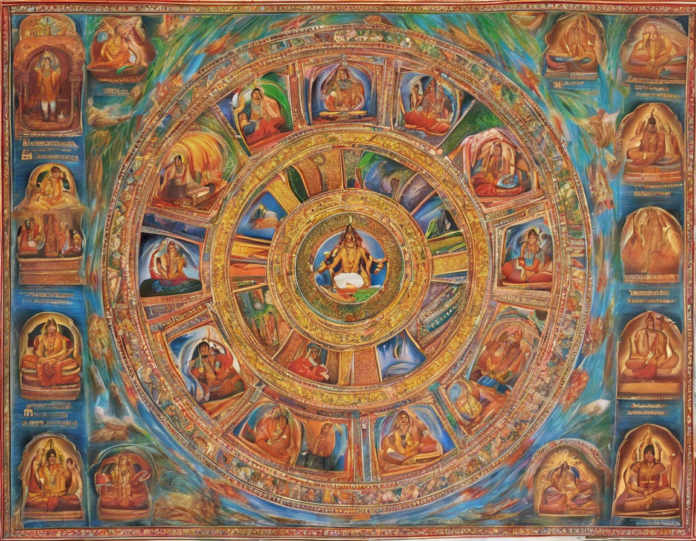Introduction
In the diverse and culturally rich tapestry of languages, Hindi stands out as one of the most widely spoken languages globally. With over 300 million native speakers and millions more who learn it as a second language, Hindi holds a special place in the hearts of many.
A fundamental aspect of any language is its alphabet, and in Hindi, this is known as the Varnmala. The Hindi Varnmala consists of 13 vowels (Swar) and 33 consonants (Vyanjan), making a total of 46 characters. Each character is unique in its pronunciation and holds the key to unlocking the beauty and depth of the Hindi language.
Understanding the Basics
Before delving into the intricacies of the Hindi Varnmala, it is essential to grasp some basic concepts. In Hindi, vowels and consonants are distinct entities that combine to form syllables (Akshar). Vowels are standalone sounds, while consonants are typically combined with a vowel sound.
Vowels (Swar)
The Hindi Varnmala comprises 13 vowels, each denoted by a distinct character. These vowels are as follows:
- अ (a)
- आ (aa)
- इ (i)
- ई (ee)
- उ (u)
- ऊ (oo)
- ए (e)
- ऐ (ai)
- ओ (o)
- औ (au)
- ऋ (ri)
- ॠ (ree)
- अं (am)
Each vowel has a specific pronunciation and is used in varying contexts in Hindi words. Understanding the nuances of each vowel is crucial for accurate pronunciation and comprehension.
Consonants (Vyanjan)
In addition to vowels, the Hindi Varnmala comprises 33 consonants, each representing a unique sound. These consonants are classified into five categories based on their pronunciation:
- क्व (ka-varga)
- क (ka)
- ख (kha)
- ग (ga)
- घ (gha)
-
ङ (nga)
-
च्व (cha-varga)
- च (cha)
- छ (chha)
- ज (ja)
- झ (jha)
-
ञ (nya)
-
ट्व (ta-varga)
- ट (ta)
- ठ (tha)
- ड (da)
- ढ (dha)
-
ण (na)
-
त्व (ta-varga)
- त (ta)
- थ (tha)
- द (da)
- ध (dha)
-
न (na)
-
प्व (pa-varga)
- प (pa)
- फ (pha)
- ब (ba)
- भ (bha)
- म (ma)
Each category of consonants has its unique characteristics and pronunciation, adding depth and complexity to the Hindi language.
Consonant Clusters (Vyanjan Sangh)
In Hindi, consonant clusters are formed by combining two or more consonants to create a blended sound. These clusters are commonly used in Hindi words and are integral to the language’s structure. Some examples of consonant clusters include:
- क्ष (ksha) as in क्षमा (forgiveness)
- त्र (tra) as in त्रिशूल (trident)
- स्त (sta) as in स्त्री (woman)
Understanding and practicing these consonant clusters are essential for mastering the pronunciation and fluency of Hindi words.
Vowels and Diacritics
In addition to standalone vowels, Hindi also features vowel diacritics known as Matra. Matras are symbols that are added to consonants to change their pronunciation. Some common Matras include:
- ा (aa) – used to elongate the preceding vowel sound
- ि (i) – modifies the consonant sound to include a short ‘i’ sound
- ी (ee) – modifies the consonant sound to include a long ‘i’ sound
- ु (u) – adds a short ‘u’ sound to the consonant
- ू (oo) – adds a long ‘u’ sound to the consonant
By mastering the application of Matras, learners can enhance their understanding of Hindi pronunciation and phonetics.
Commonly Confused Characters
In the vast landscape of the Hindi Varnmala, certain characters may appear similar but have distinct pronunciations. Some commonly confused characters include:
- च (cha) and छ (chha): While both characters belong to the cha-varga category, छ is pronounced with an aspiration, resulting in a ‘chha’ sound.
- ड (da) and ढ (dha): These characters are part of the ta-varga category, with ड pronounced as ‘da’ and ढ accentuated with a ‘dha’ sound.
- स (sa) and श (sha): While both characters have a similar appearance, श carries a soft ‘sha’ sound compared to the regular ‘sa’ sound.
- फ (pha) and फ़ (fa): फ denotes the phonetic ‘pha’ sound, while फ़ represents the borrowed ‘fa’ sound from Persian.
Distinguishing between these characters is essential for accurate communication and language proficiency.
Frequently Asked Questions (FAQs)
- Q: What is the significance of the Hindi Varnmala in learning the language?
-
A: The Hindi Varnmala serves as the foundation for understanding pronunciation, spelling, and word formation in the Hindi language. It is crucial for beginners to grasp the basics of the Varnmala to progress in their language learning journey.
-
Q: How can I improve my pronunciation of Hindi characters?
-
A: Practice regularly by reading aloud, listening to native speakers, and seeking feedback from language tutors or resources. Focus on distinct sounds and pay attention to nuances in pronunciation.
-
Q: Are there any online resources available for learning the Hindi Varnmala?
-
A: Yes, numerous websites, apps, and online courses offer tutorials, exercises, and interactive tools for learning the Hindi Varnmala. Some popular resources include Duolingo, Rosetta Stone, and Hindi learning websites like HindiPod101.
-
Q: What are some common mistakes learners make when studying the Hindi Varnmala?
-
A: Common mistakes include mispronouncing vowels, confusing similar-looking characters, neglecting Matras, and overlooking consonant clusters. Awareness of these pitfalls can aid in more effective learning.
-
Q: How can I practice forming words using the Hindi Varnmala?
- A: Engage in vocabulary building exercises, practice writing and spelling words using the Varnmala, create flashcards for memorization, and participate in language exchange programs to apply your knowledge in practical scenarios.
In conclusion, the Hindi Varnmala is not just a set of characters but a gateway to the rich linguistic and cultural heritage of the Hindi language. By mastering the intricacies of vowels, consonants, Matras, and consonant clusters, learners can embark on a fulfilling journey of linguistic exploration and communication in Hindi. Embrace the beauty of the Varnmala, and let its melody guide you through the enchanting realms of Hindi language learning.












